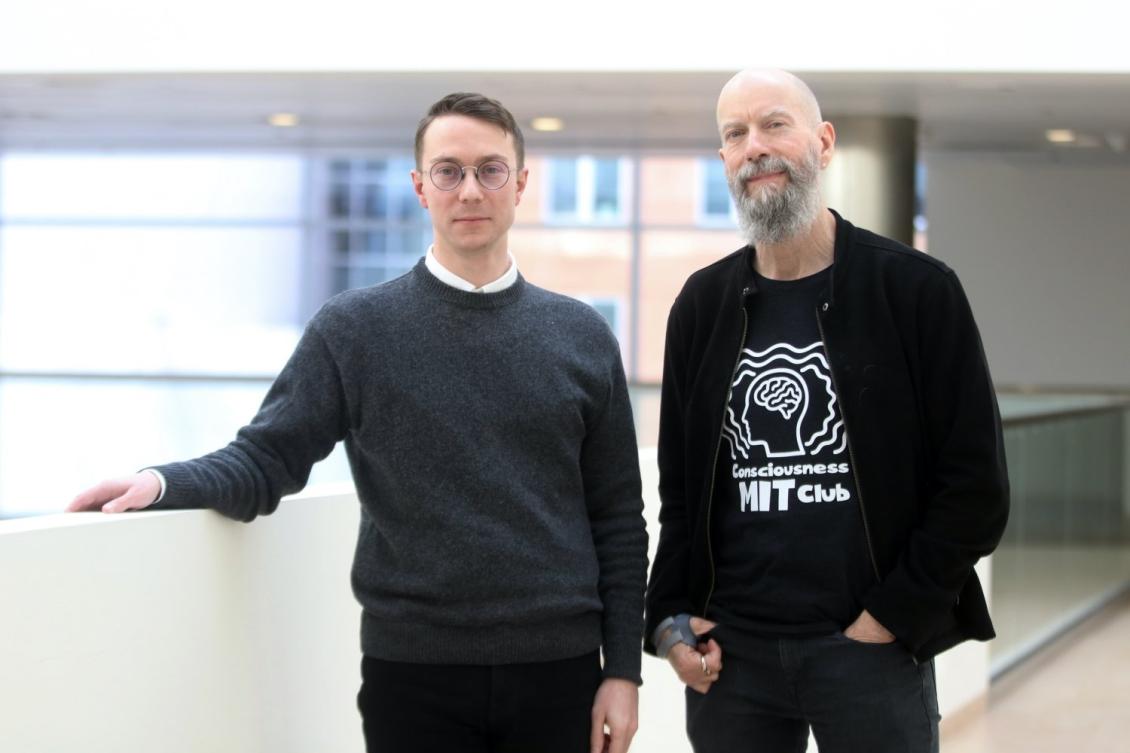Featured News

With every step we take, our brains are already thinking about the next one. If a bump in the terrain or a minor misstep has thrown us off balance, our stride may need to be altered to prevent a fall. Our two-legged posture makes maintaining stability particularly complex, which our brains solve in part by continually monitoring our bodies and adjusting where we place our feet.
Now, scientists at MIT have determined that animals with very different bodies likely use a shared strategy to balance themselves when they walk.
Nidhi Seethapathi, the Frederick A. and Carole J. Middleton Career Development Assistant Professor in Brain and Cognitive Sciences and Electrical Engineering and Computer Science at MIT, and K. Lisa Yang ICoN Center Fellow Antoine De Comite found that humans, mice, and fruit flies all use an error-correction process to guide foot placement and maintain stability while walking. Their findings, published in the journal PNAS, could inform future studies exploring how the brain achieves stability during locomotion — bridging the gap between animal models and human balance.
Featured News

Humans know they exist, but how does “knowing” work? Despite all that’s been learned about brain function and the bodily processes it governs, we still don't understand where the subjective experiences associated with brain functions originate.
A new interdisciplinary project seeks to find answers to these kinds of big questions around consciousness, a fundamental yet elusive phenomenon.
The MIT Consciousness Club is co-led by philosopher Matthias Michel, the Old Dominion Career Development Professor in the Department of Linguistics and Philosophy, and Earl Miller, the Picower Professor of Neuroscience in the Department of Brain and Cognitive Sciences.
Funded by a grant from the MIT Human Insight Collaborative’s (MITHIC) SHASS+ Connectivity Fund, the MIT Consciousness Club aims to build a bridge between philosophy and cognitive (neuro)science, while also engaging the Boston area’s academic community to advance consciousness research.
“It’s possible to study this scientifically,” says Michel. “MIT positioning itself as a leader in the field would change everything.”
“Matthias takes a science-based approach to the work” Miller adds. “A coherent, fact-based, research-supported understanding of and approach to consciousness can have a massive impact on our approach to public health.”
Featured News

While studying as an undergrad at Wellesley, Kimaya Lecamwasam participated in the MIT Undergraduate Research Opportunities Program for three years. Working in the Department of Brain and Cognitive Sciences lab of Emery Brown, the Edward Hood Taplin Professor of Medical Engineering and Computational Neuroscience, she focused primarily on classifying consciousness in anesthetized patients and training brain-computer interface-enabled prosthetics using reinforcement learning.
“I still had a really deep love for music, which I was pursuing in parallel to all of my neuroscience work, but I really wanted to try to find a way to combine both of those things in grad school,” says Lecamwasam. Brown recommended that she look into the graduate programs at the MIT Media Lab within the Program in Media Arts and Sciences (MAS), which turned out to be an ideal fit.


